 The word "cocktail" is tossed around pretty loosely these days, used to describe just about any liquid sum that is greater than its parts. That wasn't always the case. When the term was first coined by a newspaper editor back in 1806, it referred specifically to a beverage comprised of spirits, sugar, water, and bitters. Today, we call it an Old Fashioned, and anyone who's ever made one, well, the old-fashioned way, knows it can't be done without Angostura bitters. But what are Angostura bitters, and how did they earn their place in some of the most classic cocktails on the planet? What's with that label? In the interest of helping you go to the bar smarter, here are five facts worth learning about the best-known bottle of bitters. Angostura was developed as a cure for upset stomachs.As is typical in the spirits world, Angostura's place in society pre-dates its spot at the bar. All the way back in 1824, Dr. Johann Siegert—surgeon general for Venezuelan military leader Simón Bolívar—developed the stuff as a medicinal tonic for Bolívar's army. Created from a blend of herbs and spices, it was intended to cure upset stomachs. Originally called Dr. Siegert's Aromatic Bitters, it would later be renamed for the Venezuelan city of Angostura (now Ciudad Bolívar) where it was concocted. Operations eventually moved to Trinidad, where it is still produced today. That label was a mistake.Besides its bright yellow cap, what really distinguishes a bottle of Angostura bitters is the label: It's too big. As legend goes, once Siegert's sons took over the business from their dad, they set out to market the bitters however they could, which included entering them in a competition. In a scramble to get their product ready for judging, one brother was assigned the task of retrieving bottles, while another went to print labels. Due to a miscommunication or mistake, they ended up with labels too big for their bottles, or bottles too small for their labels. By the time they realized the error, it was too late to correct. Though Angostura lost the competition, a friendly judge suggested the brothers make that label their signature. The advice stuck. The recipe is a closely guarded secret.Allegedly, only five people in the entire world know the exact combination of herbs and spices that go into a bottle of Angostura. As the only people with the recipe, they've even made a pact to never fly together or so much as eat together at the same restaurant, should, god forbid, the worst happen, according to VinePair. Guessing how much of this is fact, fiction, or just good marketing is all part of the fun, but it's clear the secret formula is kept close to the chest. Some people use it as a cooking ingredient.As anyone who has ever cracked an old cookbook knows, the sixties and seventies were a weird time for food. (Check out this Twitter account for examples.) In 1961, the brand capitalized on some of that weirdness, releasing The Secret of Good Taste: The Angostura Cookbook. From turkey to pies to bean soup, the book suggests a number of ways to incorporate bitters into everyday cooking. Why not? Wisconsinites drink it by the glass.There's a bar in the Badger State called Nelsen’s Hall and Bitters Club that serves full shots of Angostura to patrons, a practice that's been kept alive since 1920. It began as a means of skirting the rules of Prohibition—it's simply a medicine for upset stomachs, after all—but as Punch reports, the tradition has lived on, giving Wisconsin the unique distinction of selling more Angostura per capita than any other state. Source: Esquire.com, January 2019
0 Comments
 When you meet Myles Marbella, you quickly learn that she does not easily take no for an answer. That tenacity and determination were vital to her simultaneously holding the portfolios of co-owner and Executive Chef at Roll Sushi and owner of Myles Express at the age of 23. Her ability to say ‘no’ extended even to her parents. Although they wanted her to pursue architecture and petroleum engineering, her love for cooking and strong-willed nature led her to pursue the culinary arts at TTHTI instead. While studying, she started her first job working at Kaizen Sushi at the age of 19. While the experience helped, Hyatt Regency was always her end goal, as she wanted to become the first female sushi chef at the hotel, something that had never been accomplished before in Trinidad. Persistence is in her blood. Her drive to work at the Hyatt would not be outweighed by idle rejection. “I applied 10 times to work at the Hyatt and got declined nine of those times”. She was there for about six months and was already receiving rave reviews about her sushi from guests, local and international. It was there she also met her future business partner, Dana Balliram. Like the other guests, Balliram was impressed with not just with Myles’ sushi but her work ethic. Balliram said that she saw a lot of potential in Myles and decided to invest in her. “She has the potential, she is a house of talent. Being around Myles and seeing what she’s done, what she’s offered people and her creativity, I realized that she has talent worth investing in. All she needed was that push to bring it out and present to the world.” She later also worked alongside Joe Brown (Jaffa at the Oval, Solimar) but it was Dana's faith in her craft that led to her recommending Myles for the role of Executive Chef for a new sushi spot on Ariapita Avenue. She faced stiff competition at the time. Not only was she the lone female applying for the job, but she was going up against chefs who were many years her senior with more culinary experience. Myles, however, had a cutting edge with a unique taste and presentation, which led to her becoming Executive Chef at Roll at 23, a rarity in the industry. While it was a monumental achievement in itself, it wasn’t enough for Myles. When a business space became available downstairs from Roll, her business partner, Dana, was the one that pushed her to take it. “I know Myles’ potential and I knew that she could do so much more than sushi. She’s very creative in the culinary arts, always sampling with different tastes and styles of food.” The two played around with ideas, concepts and menu, eventually settling on a takeout spot, with a deli-style menu. Soon after, Myles Express was born. She has accomplished a lot such a short period of time at such a young age, but sometimes it can be a double-edged sword as she might not be taken as seriously given her young age. “It’s challenging, but I get strength because people like Dana push me; I sometimes find it challenging to manage people who are older than me but I’m learning and I’m conquering.” Running multiple businesses, of course, requires sacrifice. Her day starts at 4AM, where she preps to open Myles Express for 6AM to 1PM; from 1PM to 3PM she begins prep for Roll. She then naps for about an hour before working at Roll from 4PM to 1AM. However, when you love what you do, it doesn’t feel like too much of a sacrifice. "I always say do what you love, love what you do. You can’t give up, especially, if you have a dream. I learned that, especially with regard to Hyatt. I was turned down nine times! But this was my goal, I wanted to be the first female sushi chef there so I couldn’t give up.” At such a young age, Myles is an inspiration, not only for other entrepreneurs but young women as well. Her steadfast nature and refusal to take 'no' for an answer has allowed her to achieve her goals and break down barriers in a male-dominated industry. Source: The Loop T&T 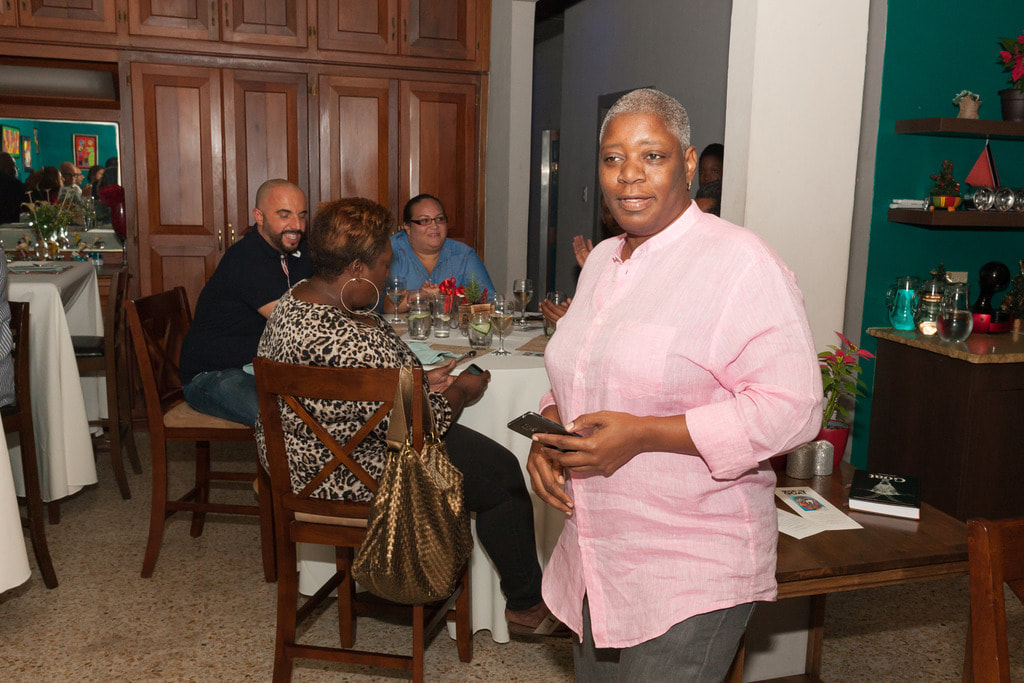 When it comes to goat meat, Caribbean people are fond of cooking it the same way: in curry. One woman is intent on changing that. Franka Philip, a popular media personality in Trinidad and Tobago, wants to expand the variety of ways goat meat is cooked, educate Caribbean people about goat meat in general and improve the goat industry. This October, she will be introducing Goatober to the Caribbean, starting first in T&T. Goatober began when an American woman, Erin Fairbanks and renowned cheesemaker Anne Saxelby, wanted to end the practice of euthanizing young male goats that the dairy industry had no use for. Goatober was created as a month-long celebration on the menu of New York restaurants as a way to promote goat meat as delicious, ethical and sustainable. In 2016, UK chef James Whetlor introduced Goatober to the UK and to mainland Europe the following year. “I follow Cabrito, a website run by James who is a chef concerned about waste in the dairy goat industry. You only need girl goats for milk and cheese and they would euthanize boy goats so he started to raise and rear boy goats and sell to restaurants. A friend connected James and me and we hit it off. I discovered he was doing Goatober which started in the States. James formalised it in the UK and is moving it through Europe and I said hey, Trinidad need to get in on that, we love goat and our meat is pretty decent and I just decided I am doing this,” said Philip. On December 9, Philip launched the first in a series of events leading up to Goatober. The intimate dinner at Aroma Culinary Studio in Woodbrook, Port-of-Spain, was attended by specially invited friends including top chefs in the country and representatives of the Goat and Sheep Society. An Italian trained T&T Chef by the unique name of Bianca Bianco whipped up the menu which included steamed goat wontons, hops with sliced goat meat, goat and cheese ravioli and corn cake with goat milk, sour cherry ice cream, and coconut tuile. It was her first time working with goat meat. “We used James’ book Goat as a guide and adapted recipes to suit our palette. We tried to get a nice Caribbean flavour,” said Philip. he said one of the challenges they faced in preparing the dinner was the butchery of the meat. “We practiced on half a goat and it was really badly butchered. We wanted to get bones to make stock and that wasn’t readily available because of how the meat was cut. There are different little elements we realise if we need to bring this up to a different standard and accessibility we have to work with the butchers,” said Philip, who has a deep interest in the way meat is cut after living in the UK for over 13 years. Deep diving into the world of food In an age when food blogging has exploded in popularity and self-professed foodies are everywhere, Philip’s foray into food may seem opportunistic. But when blogging was in its nascent stage in T&T, around 2007, Philip ran a food blog called Can Cook, Must Cook where she experimented with recipes, wrote about personalities, explored cooking in a Caribbean style and did book reviews. She had been living in England since 2000 following her graduation from the University of Sussex. The blog, she said, was started out of anger. “Going to England I saw what was on offer. In every one of the big newspapers you had a cooking section, food TV was more accessible and I became more interested in food. I lived with Bostwanian, Norwegian and English people so I was exposed to different types of food. At Sussex University there was a very diverse postgraduate cohort so I got to meet different kinds of people, ate different types of food but Caribbean food was not represented. I thought I should pitch an idea for Caribbean food to a media outlet. The editor of UK TV Food said she loved the idea but she didn’t think Caribbean food was anything to shout about and I got damn vex. That is how I started the blog. Philip’s passion for food was sparked from an early age. Her late mother, she said, was a really good cook and she spent a lot of time with her in the kitchen. An only child, Philip accompanied her mother to the market and admired the orderly fashion in which she would put away her goods and prep for the week. “That helped her to manage cooking during the week. She wasn’t a gourmet type chef but what she cooked she did very well. Daddy was into oxtail, cowheel, and souse and Mummy would make oxtail soup but in a nice way, she used plenty greens and had a very balanced approach to the way she looked at food,” Philip recalled. When cable TV arrived in T&T that opened up a world of food for Philip who would devour food shows on the Travel Channel, one in particular that took viewers across the USA exploring different cuisines. As a journalist in the Trinidad Express newspaper, even before she left for England, Philip got even more exposure to food. From 1992 to 1996 she was the social events reporter which allowed her to interact with chefs at all types of events, and they were only too happy to fill her curious mind with their knowledge. In England, Philip worked at the BBC and became friends with those who worked in the food section. She said Susan Low, an editor at BBC with a progressive approach to food, encouraged her to write for them. The Food Editor who happened to be Susan’s husband, Guy Dimond, he was very encouraging, he taught a course at City University on food writing and he would ask me to come in and talk to students. I did that for a while and I started to meet more people in food such as Dan Lepard, a well-known baker and food writer in the UK. We became friends and I did a couple Caribbean Beat stories on things we did together. Two recipes we did ended up in his book Short and Sweet. I became familiar with Yotam Ottolenghi, he has a series of books that are very well-known,” she said. Philip’s plan was to pen her own book about Caribbean food stories but life took another course. Renewing her passion In 2012, Philip returned to T&T when her mother was diagnosed with pancreatic cancer. She died within months of her diagnosis and Philip had to look after her father, who also passed away a few years later. “I had to make a decision to stay in Trinidad and I had to start working. I was in a high-pressure job at the Trinidad Guardian and I put food on the back burner. I maintained an interest but my actual forays, cooking a lot and experimenting, was on the back burner,”’ she said. In 2018, Philip left the Guardian and started to renew her passion for food. “I started to cook more, started going back through cookbooks, going through magazines and rekindled that feeling. I started to get excited by food again,” she said. She credited a close friend for reminding her about her love for food. “I was reminded by my friend that I get more excited when I talk about food. It really rang for me. I continued to write for Caribbean Beat. I have been doing that since 2007 and it is a gig that I love, it gets me to write about things I love and I started to get more passionate about doing it. That, combined with the buff from my friend, made me dig out the notes about the book I want to write,” she said, also crediting her partner Ardene, who, she said, has been very encouraging and supportive. Philip sees her role as stimulating the food industry in different areas. She is keen on food security and sovereignty, innovations, challenges in eating local, issues affecting farmers and wants to educate people about where food comes from. Philip, who runs a digital platform called Trini Good Media (TGM), intends to turn Can Cook, Must Cook into a food podcast where those topics can be explored. Through Goatober, she will execute her plans to encourage more adventure and creativity with local food, stimulate more activity in the goat industry which has already begun improvements to deliver higher quality goat products and put the Caribbean on the map. Source: The Loop, January 2019  Our own local restuarant Baccanalle has been nominated for Favourite Caribbean Restaurant for the 2019 Faces Magazine Ottawa Awards thanks to its many supporters. If you'd like to vote for Baccannalle to win, you can vote here (once per day) until January 24th: http://facesmag.ca/awards/ Congratulations to all the Faces Awards Finalists!. Tickets for the Faces Awards Show January 25 (Brookstreet Hotel) are available here: https://www.eventbrite.com/e/2019-faces-of-ottawa-awards-pr… Good luck Baccannalle!  Today the Chamber of Industry and Commerce is pleased to profile the runner-up in the Small to Medium Entrepreneur category (sponsored by EY) of the 2018 Champions of Business. In 2004, Allana and her husband Bertie Steuart wanted to raise funds to purchase a refrigerator for a community member in need. Instead of doing the usual barbecue fund raiser, Bertie and Allana decided to make pepper sauce using Bertie’s unique recipe. They made 400 bottles of pepper sauce which sold out in record time. After the fundraiser, they started receiving calls for pepper sauce orders and Allana convinced Bertie to make another batch. This second batch sold just as quickly. The demand was continuous so the Steuarts continued production at their home. Eventually, Allana started distributing on a small scale to local restaurants and mini marts. In 2008, a breakthrough came when Tony Roma’s approached her to supply its restaurant on an exclusive basis. In August 2012, the company landed its first major supermarket – Massy Stores (then Hi-Lo). This was the impetus to increasing the brand’s presence in the retail market. Then, in November 2014, PriceSmart approached the company to be its sole pepper sauce brand. This forced the company to scale up their operations. They subsequently moved to Woodbrook. With new staff added and a larger facility, the company was able to increase production significantly. When Allana’s son Logan joined the business in 2015, sales increased significantly, and the company needed to find additional sources of pepper. Logan was instrumental in negotiating supplies from a local farmer with large acreage, who was able to meet the increased demand and with whom Bertie’s has forged a strong working relationship. Logan has also been instrumental in formalizing the company’s operations, its processes and increasing distribution and brand awareness. In 2016, the company moved to its current location in Aranguez. To date, Bertie’s sauces are sold at most major supermarkets like Xtra Foods, JTA and Penny Savers in Tobago and other retailers nationwide. The product is also served at an increasing number of restaurants and restaurant chains locally. Bertie’s pepper sauce has become a household name in Trinidad and Tobago and is one of the most popular commercial pepper sauces on the market. In spite of the company’s success, it has remained true to the original Bertie’s recipe and maintained its commitment to using only fresh local peppers. The Bertie’s product line has expanded and now includes their original Bertie’s Pepper Sauce, a Pimento Sauce and a Scorpion Pepper sauce. Bertie’s continues to be a major buyer of hot peppers and is proud to be a supporter of local farmers. They are “proudly TT” and this is reflected on all product packaging. Allana and Logan are currently exploring possibilities for the export market, starting with the Caribbean. Source: Newsday, Dec 20, 2018  A Trini Christmas is the best. And in large, contributing to this are our festive Christmas foods. We have perfected the grand art of fusion and created an original cuisine for this season. Some food gurus thumb their noses at the term fusion, however, we would not have this outstanding cuisine if our ancestral cooks had not utilised the art of fusion. Really, what they tried to do is recreate the familiar foods of their past, using ingredients available to them locally, and so through the years, we inherited what we know as our true Trini Christmas cuisine. These include boiling hams in pitch-oil tins, soaking black cake fruits for up to one year in advance to use in our black cakes; securing fig leaves to wrap pastelles, stocking up on enough rum for use in black cake and ponche de crème and baking bread to sandwich the ham and preparing garlic pork. Making pepper jelly and chow-chow to dress our meals, and preparing sorrel and ginger beer to cool us all down. Most of these traditions still live on today, thankfully, although some have sadly been substituted for more non-traditional foods at this time. For me, I am a lover of tradition and our Christmas cuisine. Making black cake is a big part of my Christmas tradition which I begin in October. I soak my fruits in a mixture of rum and cherry brandy for up to one month or more. I omit the browning, which I think imparts a bitter flavour to the cake, and I use a higher ratio of fruit which results in a dense, moist and very dark cake. It’s important to continue nursing the cake after baking for a few days with your choice of rum or brandy to keep it moist until use. Of course, you can opt for a non-alcohol version by replacing the alcohol with pure grape juice. And if you are not a lover of dark fruit cake, you can make a light fruit cake which is equally alluring on a different level! Light fruit cake 1 cup butter 1 cup granulated sugar 4 eggs 1/2 cup raisins 1/2 cup candied cherries, finely chopped 1/2 cup mixed peel 1/2 cup chopped walnuts or almonds, (optional) 2 cups all-purpose flour Preheat oven to 325 degrees. Finely chop fruits. Grease, line and flour 1 nine-inch round pan. With an electric mixer, cream butter and sugar until light and creamy, about 5 minutes. Add eggs one at a time beating well between additions. Fold in flour and fruits. Pour batter into a 9-inch round pan. Bake for about 11/2 hours. Cool. Best ever Christmas black cake 1 lb raisins 1 /2 lb currants 1/2 lb sultanas 1/2 lb prunes 1/2 lb chopped walnuts 1/4 lb mixed peel 1/4 lb cherries 1 2/3 cups dark rum 1 2/3 cups cherry brandy 1 lb Butter 1 lb all-purpose flour 3 tsp baking powder 1 lb brown sugar 6 eggs 1 tsp cinnamon and allspice, mixed 2 tsp mixed essence Combine rum and cherry brandy and add fruits to mixture. Let soak overnight or up to one week. Preheat oven to 300F. Cream butter and sugar until light and fluffy. Add eggs one at a time, beating well after each addition. Sift together flour and baking powder, cinnamon and allspice. Drain fruits reserve liquid. Chop or mince in food processor. Add drained fruits to butter and sugar mixture. Add cut up cherries and nuts. Fold flour into fruits and butter mixture. Add mixed essence, mix well. Grease and line two 9-inch cake pans with waxed paper, grease and flour paper. Spoon cake batter equally into prepared baking pans. Bake for 2 to 2 1/2 hours. Source: Newsday, Dec 2018  Anyone from T&T who has dined on authentic Indian dishes, immediately realises that Indo-Trinidadian cooking is a Caribbean experience all on its own and owes as much to its evolution in the west as its origins in the east. Shortly after the arrival of Indian Indentured Immigrants as a source of cheap, reliable labour, Trinidad's Colonial Government, under Lord Harris (1846-54), realised that the newcomers had by necessity, to be fed on food that they were accustomed to in India or else they would suffer malnutrition. Thus, large quantities of foodstuff began arriving in the colony. Paddy rice (Trinidad was already familiar with creole hill rice or red rice, grown by ex-American black soldiers of the Company Villages), split peas (dhal), ghee, and curry spices, all originally sourced exclusively for the Indians, began to find their way into shops and soon formed a foundational part of the national cuisine. For new Indo-Trinidadians, the commissary of their assigned estates was supposed to supply them with food rations and clothing for the first year of their five-year contract. This mandatory regulation was often ignored, and some unscrupulous planters even deducted the cost of the rations from the pittance paid to the Indians. Strictly speaking, the standard allowance was as followed: For every male over 18 years of age per month: 45lbs of rice, 9lbs dhal, 1/4 gallon ghee or coconut oil, 1 1/2 lbs salt, 6 lbs salt-fish, 2 lbs onions and chilliest. Women and children received half the rations of men. At the depot for incoming Indians (up to 1917) at Nelson Island, provisions for the transients consisted of rice, pumpkin, freshly-slaughtered mutton, and chapattis. Most estates allowed the Indians provision grounds to supplement the rations. Where garden plots were allotted, and on small homesteads after their contracts expired, the immigrants grew an abundance of food, which by the 1880s had made them the primary source of vegetables, root crops and milk in the island. Mangoes were a key ingredient, originating of course in India, as were several varieties of squash, including jhingee and lowkie. By infusing the bare ingredients of the commissariat issue with curry and adding the bounty of the vegetable gardens, wholesome talkarees were created. These were largely enjoyed only by the Indo-Trinidadian community as good, hearty peasant fare until the advent of the roti-shop in the 1940s. With the coming of thousands of American soldiers to the army and air- force bases on the island, roti and curry found a new and enthusiastic connoisseur. Perhaps the greatest example of cultural fusion and the flagship of Indo-Trinidadian food is the ubiquitous doubles, which was born in the 1940s when an enterprising vendor named Mr Ali combined curried chickpeas (channa) with two fried dough slices (bara) and gave Trinidad and Tobago its staple fast food. Today, roti, doubles and other Indo-Trini fare has spread to Europe and America through the diaspora, and remains as wildly popular as ever. Source: Virtual Museum of T&T 2012 Here's a perfect example of what Trinidad and Tobago needs to invest in.
Meet the young, assiduous and very hardworking Jesse Harripersad of Williamsville, a 22 year old admirable farmer. Jesse is a brilliant and respectable young man that studies Agriculture at the University of Trinidad and Tobago. I've interacted with Jesse several times only to be inspired by his love for agricultural growth. Additionally Jesse is a well rounded individual who very strategically balances his life and is very disciplined. He rigidly follows the 4:00 am mornings working his land and caring for his produce, followed by his active university class participation and believe it or not he is also an extremely talented young cricketer with great swing bowling ability and a test player's attitude. This young man is definitely one for the future and Promote TT strongly supports his ventures. Jesse takes pride in feeding our nation. I would like to give a shout out to this young trini who is starting up her own business here in the National Capital. You can follow her on Facebook and Twitter. She is located at 595 Montreal Rd, Ottawa, Ontario, Tel: (613) 859-6297. - the Capital Fare Cafe . http://www.baccanalle.com/capitalfarecafe. Some of her delicious products include patties, sweet jerk sauce, Sorrel, jerk chicken, jerk wings, curry, Vegan curry, catering, prepared meals, cupcakes, cakes, coconut bread, sweetbread, farmer's market, food gifts, gluten-free cookies, brownies, bake, buljol, salt fish, muffins, callaloo, and sweet potato pound cake. You may not know that while I am now a professionally trained Chef (love always for the Algonquin College School of Hospitality and Tourism), my first degree is in Chemical Engineering (❤️uOttawa Génie Engineering) and I spent most of my career as an Engineer and Manager at Environment Canada.
So it gives me great pride and joy to introduce for the first time Baccanalle Sorrel Chai Tea. Not only can you have a “cuppa” anytime, we now have a zero-waste process based on our ingredients and essentially a full line of Sorrel products (and more to come) - all #vegan and #glutenfree 1- Sorrel (traditional Caribbean Hibiscus drink) 2-Cranberry Sorrel Compote (made with locally sourced cranberries) 3-Sorrel Chai Tea We look forward to sharing them with you -a great gift or enjoyable for the Holiday season! Find us at Etsy Made in Canada Ottawa, Beechwood Market Thanksgiving Saturday and Ottawa Farmers' Market the last two weekends leading up to Christmas. Cheerfully Made Goods + Markets #613etsy #etsy #artisans #ottawa#caribbeanlifestyle #trinistyle #613food #613food #ottawafood #foodies |
T&T news blogThe intent of this blog is to bring some news from home and other fun items. If you enjoy what you read, please leave us a comment.. Archives
June 2025
Categories
All
|
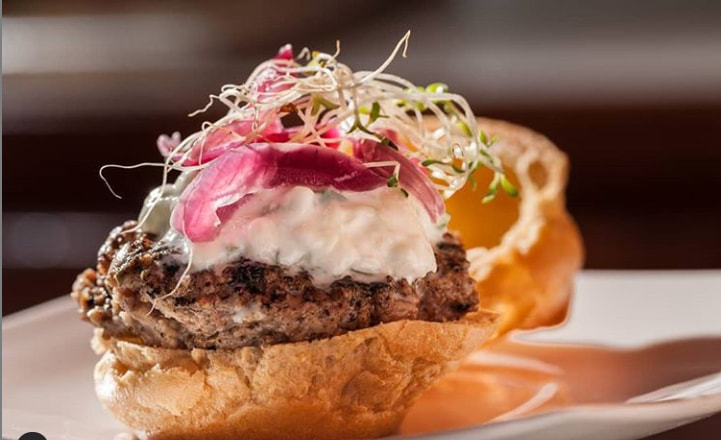

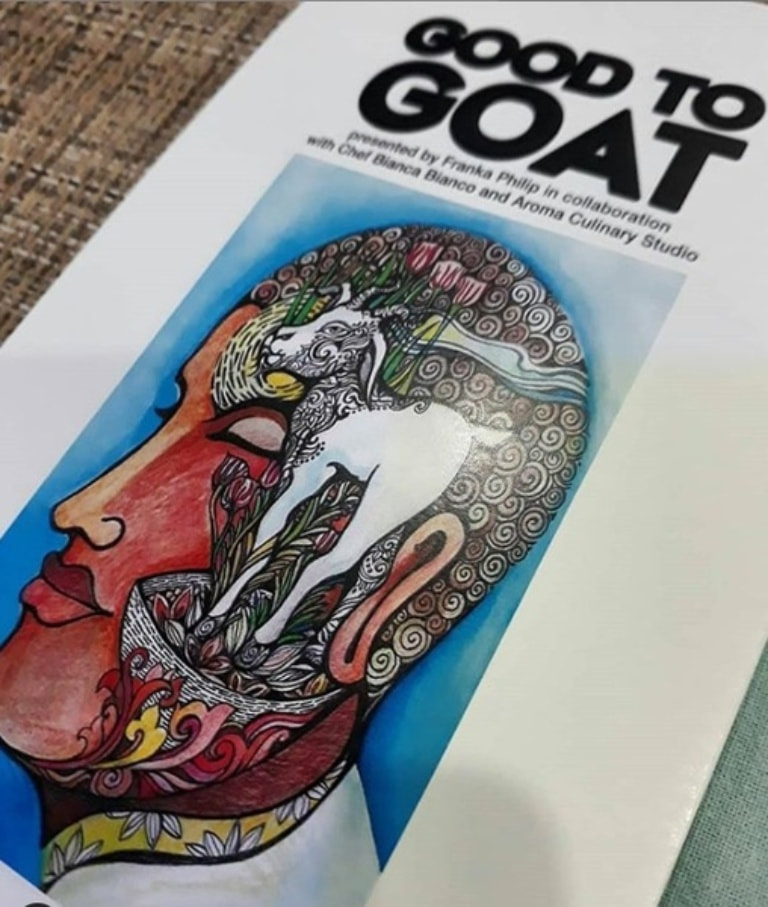

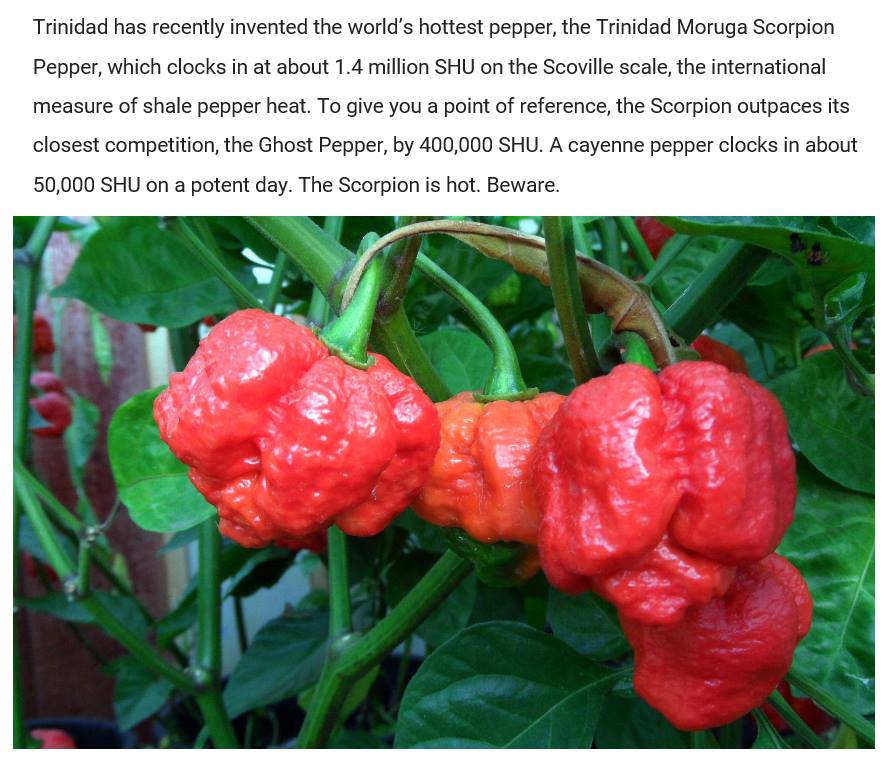
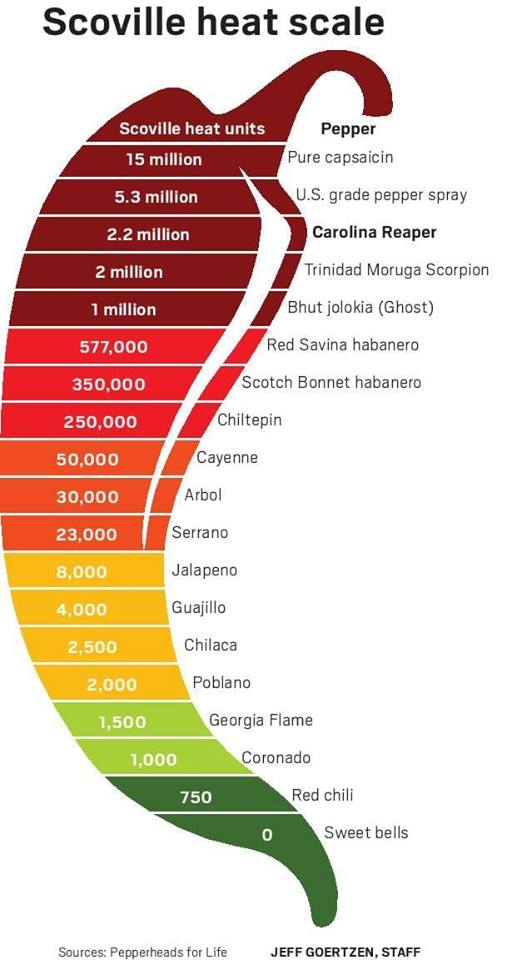
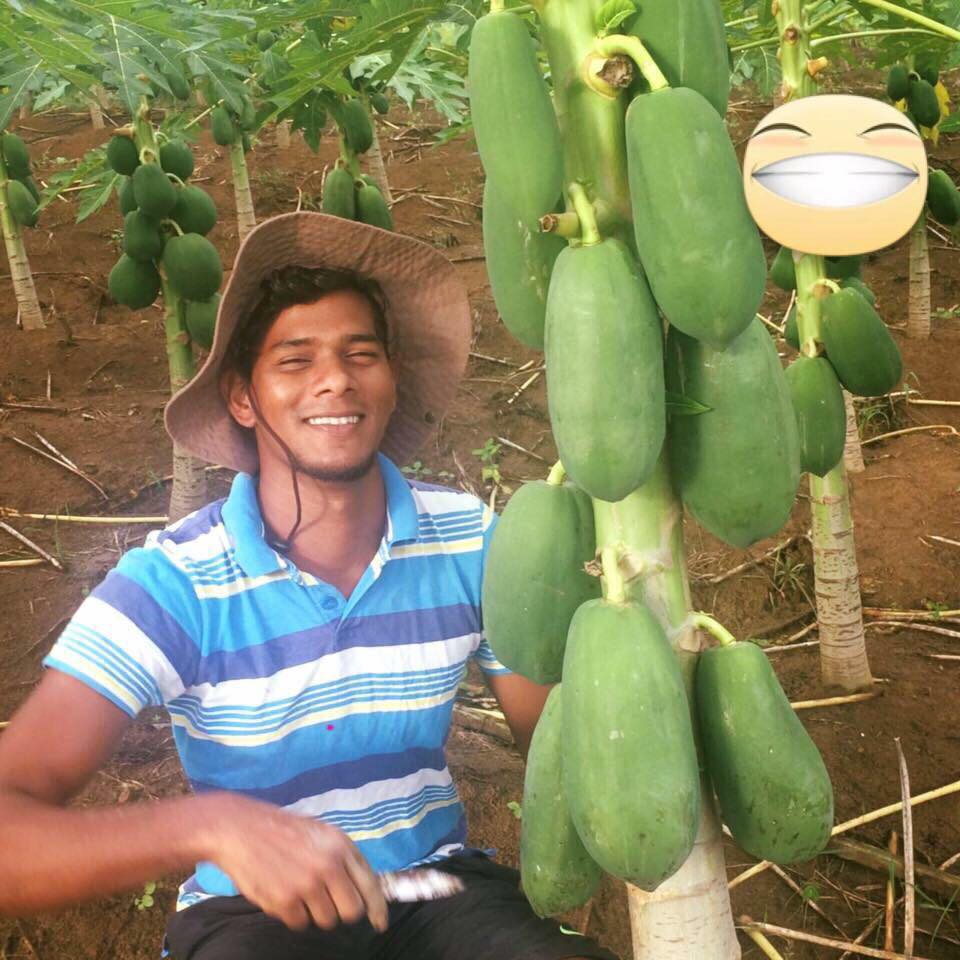






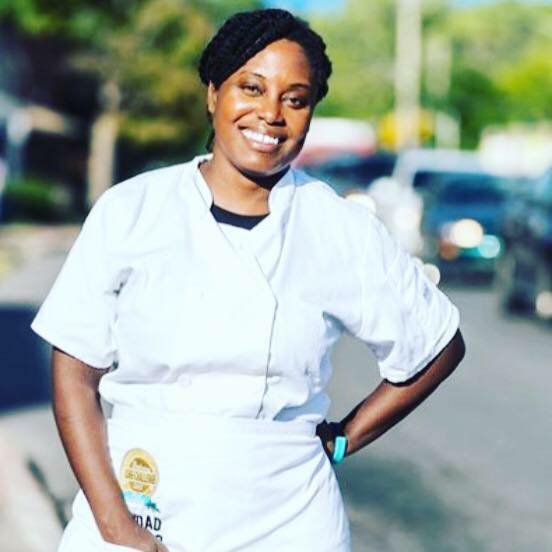
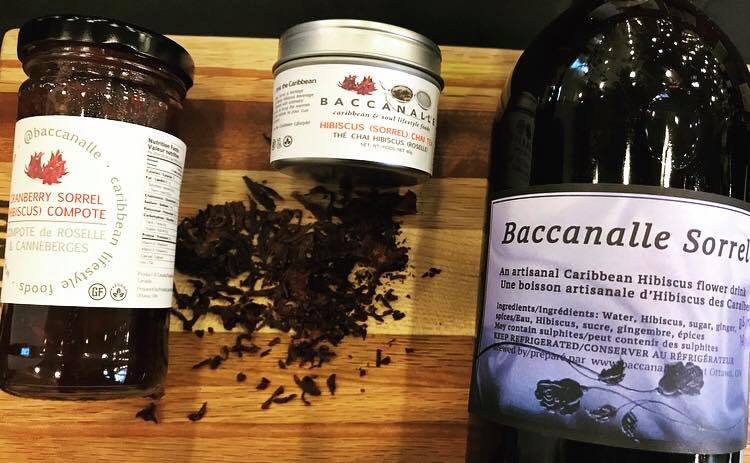

 RSS Feed
RSS Feed